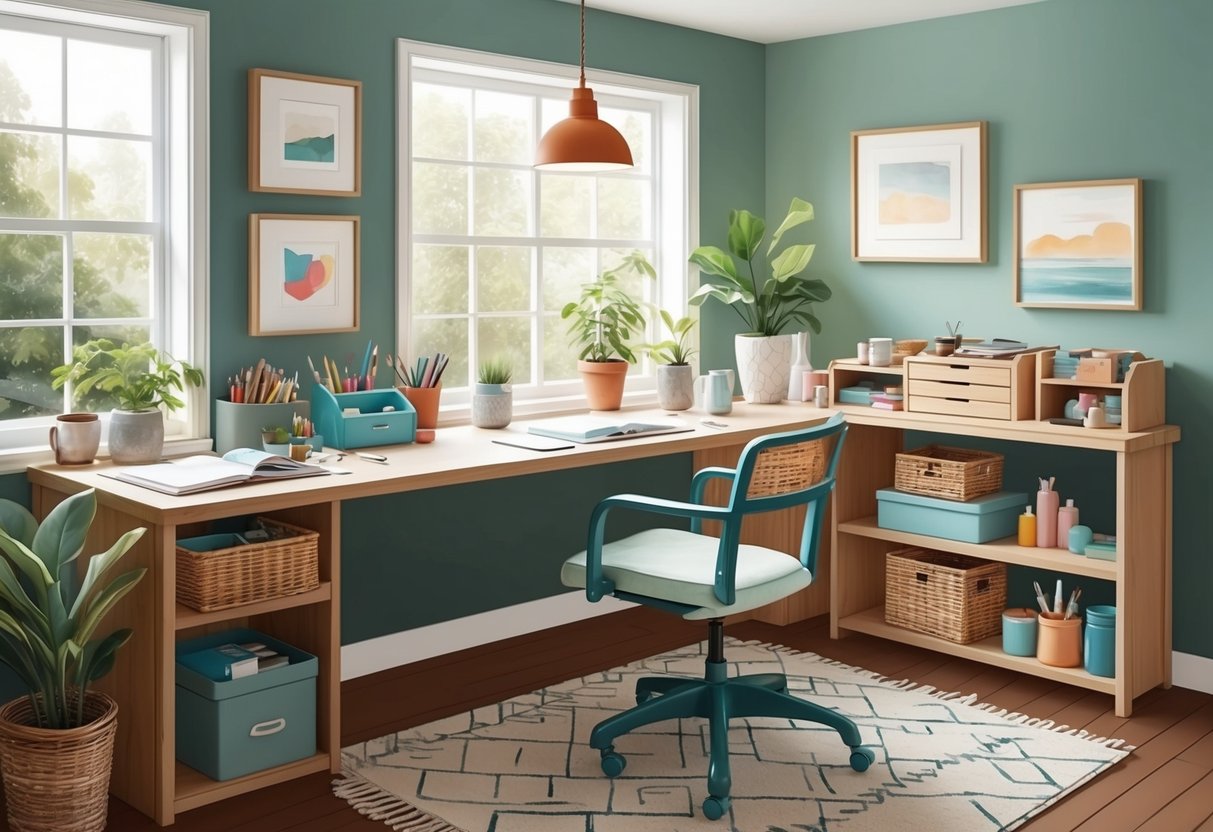
Exclusive Strategies for Sustained Creative Growth
Achieving sustained progress in creative potential requires mindful routines and clear direction. Effective practices target both daily inspiration and measurable personal growth to keep individuals engaging with their craft over the long term.
Maintaining Motivation Over Time
Long-lasting creativity depends on maintaining interest and energy. One recommended method is to deliberately seek out new experiences and challenge comfort zones, drawing inspiration from unfamiliar activities or diverse perspectives.
This active approach keeps the creative mind engaged and open to unique ideas, preventing stagnation. Engaging in regular creative activities such as drawing, writing, or playing music fosters a routine that makes creativity a natural part of daily life.
It helps to inject playfulness into projects and dedicate specific time blocks for creative work each day. Maintaining curiosity, embracing ambiguity, and reflecting on progress further enhance sustained innovation and drive.
Read more about rekindling motivation through immersive creative approaches and building creative routines.
Key Tactics for Ongoing Motivation:
- Routinely try unfamiliar tasks or learn new skills
- Participate in creative exercises across arts or music
- Reflect daily or weekly on creative efforts
Setting Personal Creative Goals
Setting specific, achievable goals is essential for anyone aiming to unlock exclusive creative potential and ensure progress. These goals provide focus and track personal growth.
Creators can celebrate small wins along the way. Clarifying what matters most makes it easier to say no to distractions and helps avoid burnout.
An effective strategy is to outline short-term and long-term goals using clear, measurable criteria. For example, a writer might aim to draft a short story each month.
An artist may choose to complete a new painting weekly. Keeping a goal journal or checklist helps track development and highlight areas for further exploration.
Goal-Setting Strategies:
| Approach | Example | Benefit |
|---|---|---|
| SMART Goals | Write a poem every Sunday | Measurable progress, greater clarity |
| Milestone Plans | Complete a portfolio by July | Motivation from tangible achievements |
| Visual Reminders | Progress charts in workspace | Daily reinforcement of priorities |
For more strategies on cultivating personal creative habits and goal-setting frameworks, explore this guide to establishing daily creative routines.
Frequently Asked Questions
Daily habits shape creative potential and influence craft project outcomes. The right routines, environment, and mindset can help unlock original ideas while reducing creative blocks.
What daily practices can help improve my creativity in crafting?
Keeping a daily writing or creative session, even for a short time, trains the mind to find inspiration more easily. Trying activities like morning pages, creative brain dumps, or mindful meditation can clear mental clutter and make room for new ideas.
Exploring other crafts or related hobbies can also spark unexpected creative breakthroughs.
How does establishing a routine contribute to increased creative output?
Adopting a regular schedule, such as scheduled writing sessions or dedicated crafting time, helps form habits that support productivity. Consistency signals the brain to prepare for creative thought and makes it easier to enter a focused, inventive state.
Many creative people find that sticking to a specific routine leads to more reliable inspiration and better work, as highlighted by creative daily routines.
Are there specific times of day that are more conducive to creative work?
Some people notice higher creative energy after waking up, making morning a prime time for crafting or brainstorming. Others may find that late evenings or quiet afternoons provide fewer distractions for their projects.
Individuals should pay attention to their natural rhythms and choose times when they feel most mentally alert or inspired.
What role does environment play in enhancing creativity for crafting activities?
A tidy, organized workspace can reduce stress and help keep materials easily accessible. Introducing new elements, such as inspiring images, different textures, or background music, can stimulate fresh perspectives.
Engaging with unfamiliar surroundings or occasionally breaking routine, as suggested by novelty-driven habits, can spark creativity by challenging the brain with new stimuli.
How can I overcome creative blocks and maintain consistent productivity?
Changing scenery, engaging in mindful practices, or temporarily working on unrelated tasks can help reset creative flow. Embracing mistakes as learning opportunities encourages experimentation and reduces the pressure to create perfectly.
Maintaining a daily habit of crafting can keep momentum strong and make it easier to push through temporary blocks, according to daily creativity tips.
What habits should I cultivate to support ongoing inspiration for my craft projects?
Remaining curious and exploring new interests, such as learning about unfamiliar techniques or materials, helps keep ideas fresh.
Asking questions about processes or outcomes develops a broader perspective and deeper skill.
Stepping out of comfort zones and seeking novel experiences nurture sustained inspiration, as recommended in simple creative habits.



